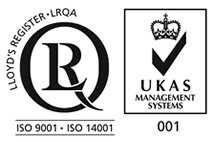
Main Products
Copyright 1998-2025 Firmetal Group All Rights Reserved. | Sitemap
The core application of niobium-titanium alloy foil lies in the combination of its low-temperature superconducting properties and the high compatibility of thin materials, mainly concentrated in fields that require strong magnetic fields, lightweight and high precision, and also extended to some special structural scenarios.
Superconducting magnets and the energy field. This is the most core application field of niobium-titanium alloy foil. Relying on its mature low-temperature superconducting properties (critical temperature approximately 9.5K, critical magnetic field approximately 12T), it is mainly used to manufacture conductive components of high-field magnets. Superconducting magnet coil base material: In nuclear magnetic resonance imaging (MRI) equipment and particle accelerators (such as synchrotron radiation sources), niobium-titanium alloy foils can be combined with copper foils to make superconducting cables or coils. The thin material form can reduce the volume of the coil, improve the uniformity of the magnetic field, and at the same time, the copper layer can stabilize the current during the superconducting failure time, ensuring the safe operation of the equipment.
Superconducting energy storage (SMES) devices: used for manufacturing current leads and coil windings in superconducting energy storage systems. The thin and light characteristics of foil materials can reduce the overall weight of energy storage devices, and their superconducting properties can achieve efficient storage and release of electrical energy, reducing energy loss. They are suitable for scenarios such as peak shaving in power grids and grid integration of new energy. Superconducting motors and transformers: In superconducting motors and high-efficiency energy-saving transformers used for ship propulsion, niobium-titanium alloy foil materials can be used as superconducting winding materials for stators or rotors. The thin material structure is convenient for bonding with the iron core, enhancing the power density of the motor and simultaneously reducing the Joule heat loss during equipment operation.
Aerospace and precision structures field. Taking advantage of its high strength, lightweight and low/medium temperature resistance, it is used to manufacture precision components in extreme environments. Cryogenic structural components for spacecraft: In the cryogenic propulsion systems of satellites and detectors (such as liquid hydrogen/liquid oxygen fuel pipelines), niobium-titanium alloy foils can be made into sealing gaskets and thin-walled conduits. It can maintain good mechanical stability within the range of -269 ℃ (liquid helium temperature) to 300℃, avoiding low-temperature brittle cracking. Meanwhile, its lightweight feature can reduce the launch weight of spacecraft.